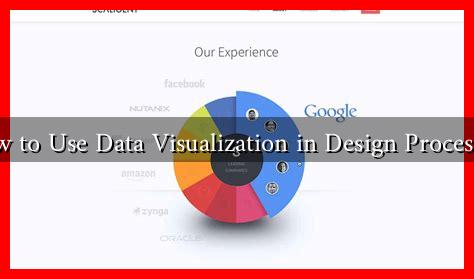-
Table of Contents
- How to Use Data Visualization in Design Processes
- Understanding Data Visualization
- Benefits of Data Visualization in Design
- Integrating Data Visualization into the Design Process
- 1. Define Your Objectives
- 2. Choose the Right Visualization Type
- 3. Utilize Design Principles
- 4. Test and Iterate
- Case Study: Airbnb’s Data Visualization
- Conclusion
How to Use Data Visualization in Design Processes
In today’s data-driven world, the ability to effectively communicate information is more crucial than ever. Data visualization plays a pivotal role in design processes, enabling designers to present complex data in a clear and engaging manner. This article explores how to leverage data visualization in design, offering insights, examples, and best practices to enhance your design projects.
Understanding Data Visualization
Data visualization is the graphical representation of information and data. By using visual elements like charts, graphs, and maps, designers can make data more accessible and understandable. The primary goal is to communicate information clearly and efficiently to users, allowing them to grasp insights quickly.
Benefits of Data Visualization in Design
Incorporating data visualization into design processes offers several advantages:
- Enhanced Clarity: Visual representations can simplify complex data, making it easier for users to understand.
- Improved Decision-Making: By presenting data visually, stakeholders can make informed decisions based on insights derived from the data.
- Increased Engagement: Engaging visuals can capture the audience’s attention, making the information more memorable.
- Efficient Communication: Visuals can convey messages faster than text, allowing for quicker comprehension.
Integrating Data Visualization into the Design Process
To effectively use data visualization in your design processes, consider the following steps:
1. Define Your Objectives
Before diving into data visualization, it’s essential to clarify your objectives. Ask yourself:
- What message do I want to convey?
- Who is my target audience?
- What data do I have available?
Understanding your goals will guide your design choices and help you select the most appropriate visualization techniques.
2. Choose the Right Visualization Type
Different types of data require different visualization methods. Here are some common types:
- Bar Charts: Ideal for comparing quantities across categories.
- Line Graphs: Best for showing trends over time.
- Pie Charts: Useful for illustrating proportions within a whole.
- Heat Maps: Effective for displaying data density or intensity.
Selecting the right type of visualization is crucial for accurately conveying your message.
3. Utilize Design Principles
Good design principles enhance the effectiveness of data visualization. Consider the following:
- Color Theory: Use colors strategically to highlight key data points and ensure accessibility.
- Typography: Choose legible fonts and sizes to improve readability.
- Whitespace: Incorporate whitespace to avoid clutter and enhance focus on the data.
Applying these principles will create a more polished and professional look.
4. Test and Iterate
Once your data visualization is complete, gather feedback from users. Testing can reveal areas for improvement, such as:
- Clarity of information
- User engagement levels
- Overall aesthetic appeal
Iterate based on feedback to refine your design and ensure it meets user needs.
Case Study: Airbnb’s Data Visualization
Airbnb effectively uses data visualization to enhance user experience. Their platform features interactive maps that allow users to explore rental options based on various criteria, such as price and location. By visualizing data in this way, Airbnb not only simplifies the search process but also provides users with valuable insights into market trends and pricing.
Conclusion
Data visualization is a powerful tool in the design process, enabling designers to communicate complex information effectively. By defining objectives, choosing the right visualization types, applying design principles, and iterating based on feedback, designers can create engaging and informative visuals. As demonstrated by companies like Airbnb, effective data visualization can significantly enhance user experience and decision-making. Embrace data visualization in your design processes to unlock the full potential of your data.
For further reading on data visualization techniques, check out Tableau’s guide on data visualization.

